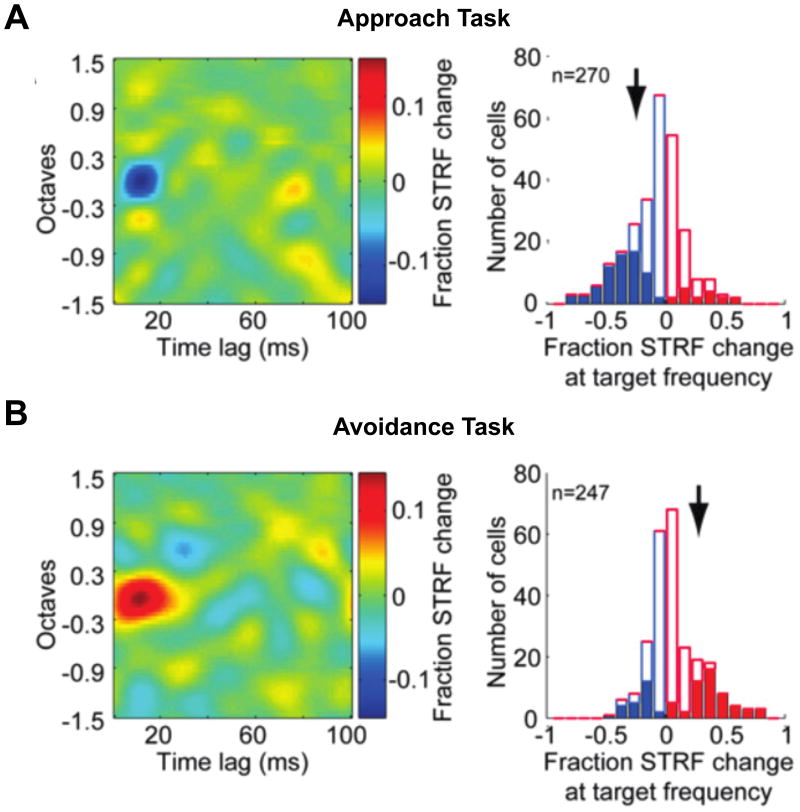Figure 4.
STRF plasticity during behavior. A) Approach task. During behavior, animals received rewards when licking during a target tone. Left: Population averaged STRF changes between active and passive conditions. STRFs were aligned to the frequency of the target tone. Blue indicates a suppression relative to the passive condition, while red indicates excitation. Note that during the approach task, there is a prominent suppression at the target frequency. Right: Cell counts indicating the population level STRF change at the target frequency. Blue bars indicate suppressed responses while red bars indicate enhanced responses. Filled bars indicate units showing significant modulation by behavioral context. Arrows denote the median change in significant units. B) Avoidance task. During behavior, animals received rewards when licking during reference noise bursts, but not during the target stimulus. Plots as in A). Note that during the approach task, there is significant suppression at the target, while during the avoidance task, there is significant enhancement at the target. Figures adapted from David et al., 2012 [73].

